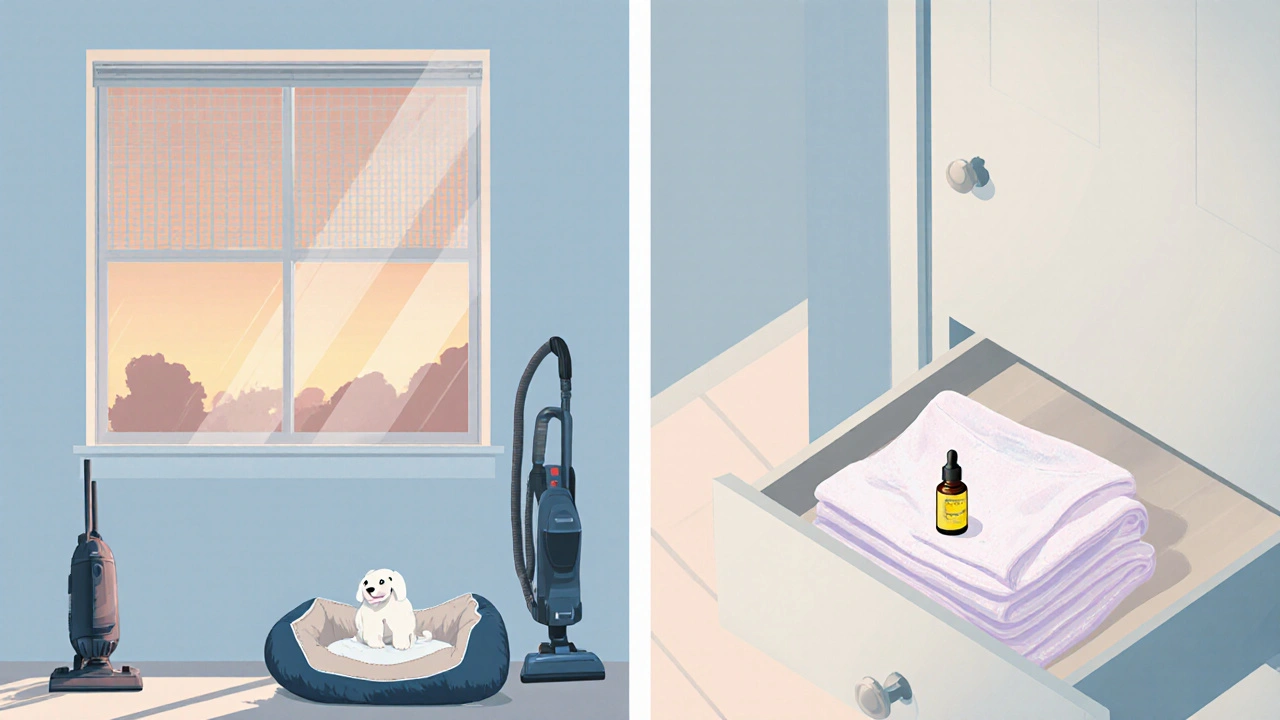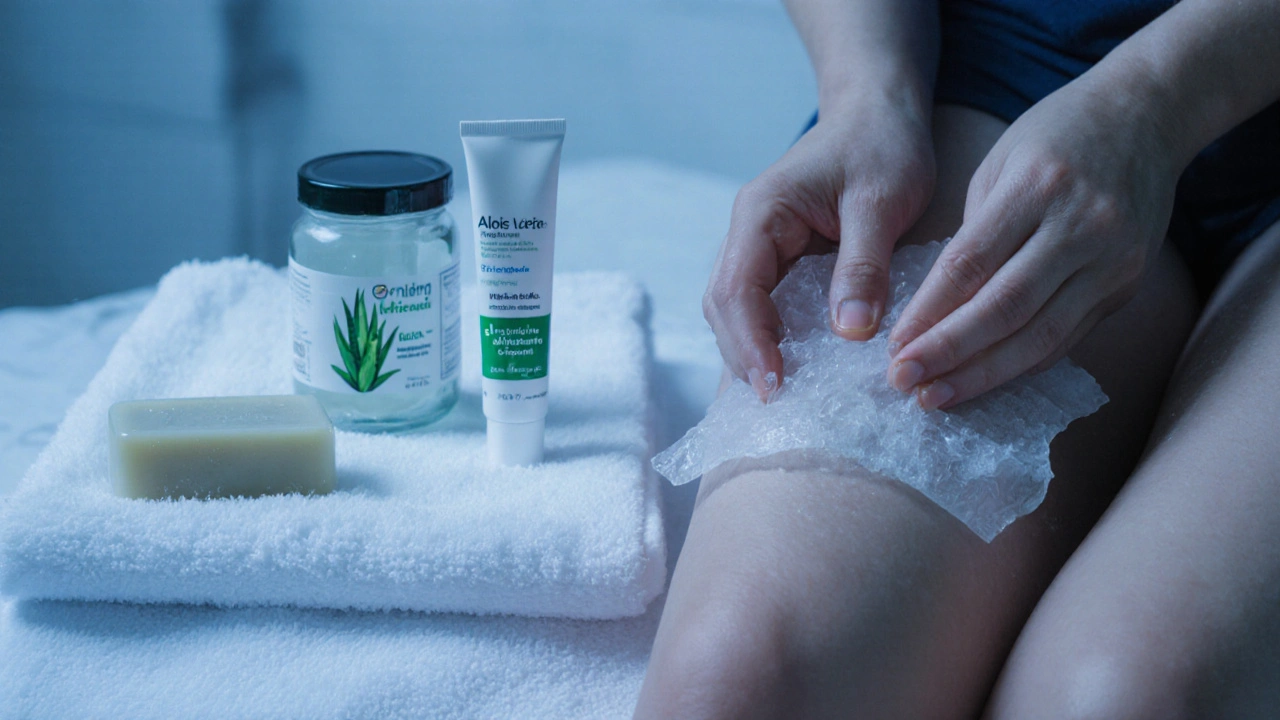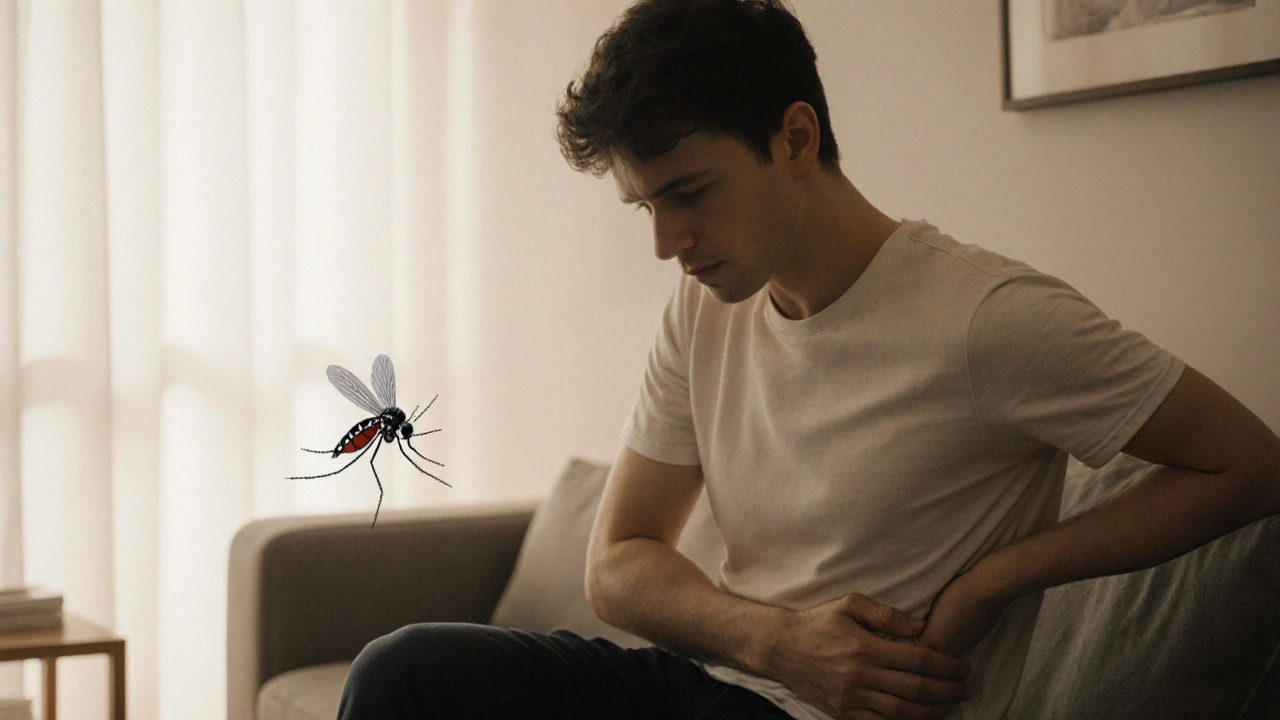Bite Risk Assessment Tool
This tool helps you assess your risk of anal itching from insect bites based on your environment and habits. Get personalized prevention recommendations and learn how to reduce your risk.
Risk Assessment Form
Ever sat on the couch and felt an inexplicable itch that seems to come from nowhere? Chances are a tiny insect decided your rear end was a perfect landing spot. While most bites heal without a fuss, the sensitive skin around the anus can turn a simple bite into a painful, itchy nightmare. Below you’ll find a straight‑forward guide to keep those bites from happening and to soothe the irritation if they do.
What makes the anal area a hotspot for bite‑related irritation?
Insect bite is a small puncture wound caused when a mosquito, flea, or other biting arthropod pierces the skin to feed on blood. The bite injects saliva that contains anticoagulants and proteins, which trigger an immune response. The skin around the anus is thin, has lots of nerve endings, and stays moist - conditions that amplify the reaction. anal itching often feels more intense here because the area is constantly rubbed by clothing and movement, spreading the irritant.
Common culprits include:
- Mosquitoes - especially in humid evenings.
- Fleas - from pets that wander indoors.
- Bed bugs - hide in seams of mattresses and can bite exposed skin during sleep.
- Sandflies - a problem in coastal regions like Durban during summer.
Spotting the symptoms: When is it a bite?
Distinguishing a bite from other causes of anal itching (like hemorrhoids or fungal infections) helps you treat it correctly. Look for these tell‑tale signs:
- A small, raised bump that appears suddenly.
- Redness spreading outward from the center.
- Itchiness that peaks 12‑24hours after the bite.
- Occasional swelling or a watery discharge if the bite breaks the skin.
If the area feels burning, you notice pus, or the symptoms linger beyond three days, a medical professional should evaluate it.

Step‑by‑step: Preventing bites at home
Stopping bites before they happen is the simplest way to avoid irritation. Follow these practical steps:
- Seal entry points. Use window screens, seal cracks around doors, and keep doors closed at dusk when mosquitoes are most active.
- Control indoor pests. Vacuum carpets weekly, wash pet bedding in hot water, and treat your dog or cat with a vet‑approved flea preventive.
- Maintain hygiene. Hygienic wipes are cloths infused with gentle antiseptic that can be used after bathroom trips to keep the area clean and less attractive to insects.
- Use protective clothing. Light, loose‑fitting underwear made of breathable cotton reduces friction and heat, two factors that attract biting insects.
- Apply natural repellents. A dab of lemon‑eucalyptus oil on the lower abdomen and inner thighs creates a scent barrier without irritating the anal skin.
Immediate relief: What to do right after a bite
When you notice a bite, act fast to calm the reaction:
- Cold compress. Cold compress provides vasoconstriction, reducing swelling and numbing the itch. Apply for 10‑15 minutes, three times a day.
- Wash gently. Use lukewarm water with a mild, fragrance‑free soap. Avoid scrubbing, which can worsen irritation.
- Avoid scratching. Scratching breaks the skin, increasing infection risk.
Home‑based treatment options
If the bite has already set in, these over‑the‑counter and DIY remedies are both safe for the delicate anal region:
| Remedy | How it works | Typical use | Pros | Cons |
|---|---|---|---|---|
| Cold compress | Reduces blood flow, numbs nerves | 10‑15min, 3×/day | Instant relief, no chemicals | Needs a clean cloth, temporary |
| Topical corticosteroid | Suppresses inflammation | Apply thin layer, once daily | Effective for moderate swelling | Should not be used >7days without doctor |
| Antihistamine cream | Blocks histamine, the itch chemical | Apply 2‑3×/day | Gentle, suitable for sensitive skin | May cause mild redness in some people |
| Aloe vera gel | Soothes, antimicrobial | Apply after cleaning, 2×/day | Natural, cooling effect | Quality varies; pure gel preferred |
Pick one or combine two-e.g., start with a cold compress, then apply a thin layer of antihistamine cream once the skin is dry.

When to call a healthcare professional
Most bites resolve within a few days, but watch for warning signs:
- Rapidly spreading redness or large swelling.
- Visible pus or a foul odor-possible infection.
- Severe pain that interferes with sitting or walking.
- Fever, chills, or swollen lymph nodes.
In these cases, a doctor may prescribe oral antibiotics, a stronger steroid, or investigate other skin conditions that mimic bite reactions.
Quick‑reference checklist
- Seal windows and doors at dusk.
- Vacuum and wash pet bedding weekly.
- Use breathable cotton underwear.
- Apply lemon‑eucalyptus oil as a repellent.
- At first sign of a bite, clean, cool, and avoid scratching.
- Choose a suitable home remedy-cold compress, antihistamine cream, or aloe vera.
- Seek medical help if infection or severe symptoms appear.
Frequently Asked Questions
Can I use over‑the‑counter hydrocortisone on the anal area?
Yes, a 1% hydrocortisone cream can calm inflammation, but apply a thin layer and limit use to 7 days unless a doctor advises otherwise.
Are there any home foods that help reduce itching?
A spoonful of plain yogurt applied topically can provide a cooling effect thanks to its probiotic acids. Rinse after 15 minutes to avoid residue.
Do I need to change my bathroom routine?
After each bathroom visit, gently pat the area dry with a clean towel, then consider a quick swipe with a mild antiseptic wipe. This reduces moisture that attracts insects.
Is it safe to use essential oils near the anus?
Only dilute essential oils (e.g., 1% lemon‑eucalyptus in a carrier oil). Undiluted oils can cause a burn, making the itch worse.
What’s the best way to treat a bite that turned into a small ulcer?
Clean the ulcer with saline, apply an antibiotic ointment (e.g., bacitracin), and cover with a breathable gauze. If it doesn’t improve in 48hours, see a doctor.
